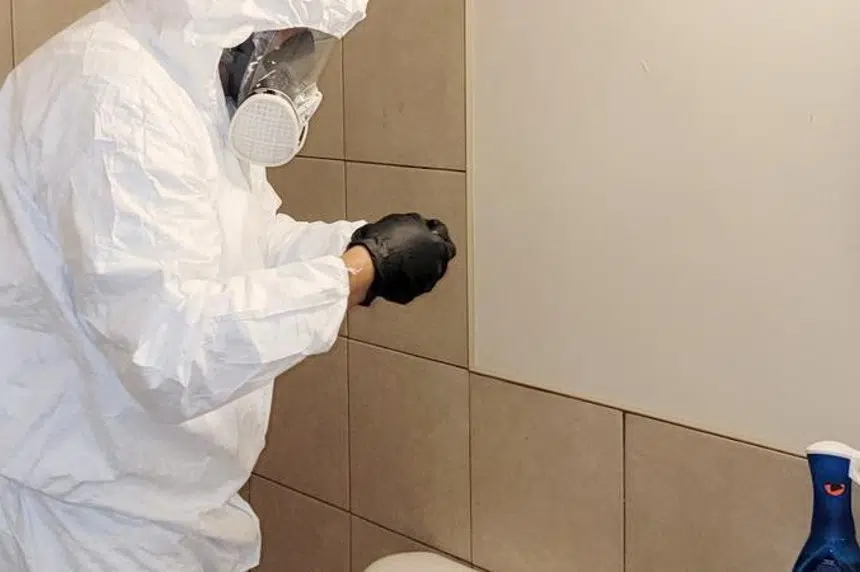By Susan McNeil
A Prince Albert man who cleans houses contaminated by meth says his business opportunities are only limited by the owners’ budgets.
Clarence Natomagan owns Meth Busters (inspired by Myth Busters) and frequently gets dressed in Tyvek with a good source of independent oxygen, goes into homes and rids them of meth residue.
“Right now, the only thing holding us back from working all the time, full time, is budgeting,” he said. “This problem is pervasive. It’s everywhere.”
The issues of addiction and contaminated housing both exist in Prince Albert and other northern communities, but Natomagan said he doubts it’s any different in Saskatoon or Regina.
He said he sees a connection between the meth epidemic and those living in low-income or social housing.
“People or organizations offer a home to the low income and — this is my opinion — that’s where most of the impacts of addictions usually are,” he said.
Most low-income homes are owned by organizations, such as public housing, and these are Meth Busters’ customers.
“Business is going to be good, it’s just a matter of the owners recognizing that, ‘You know what? We’ve got to find the money and clean these homes,’ ” Natomagan said.
Meth Busters has been in business for more than two years and started when Natomagan saw what was happening in the community and realized he had the technical background and knowledge to do the job.
“I had heard about other contractors doing these cleanups on homes that were what they call ‘infected;’ they were contaminated with meth,” Natomagan said.
After inquiries, he submitted his credentials, insurance and WCB registration and was approved by the province to remediate meth residue from homes.
The guidance limits for the need to remediate a home are very low, he explained, and are in the single-digit microgram levels.
When children are in a home that includes a meth lab, they are exposed to chemicals and toxic substances that can cause issues like headaches, nausea, dizziness and fatigue if levels are low, according to research from the California Protection Agency.
“We know from research — there’s a lot of literature out there — that kids are more impacted than adults from a respiratory perspective,” Natomagan said.
Children can develop a chronic cough and get rashes from even lower amounts of exposure, especially babies still spending a lot of time on the floor and frequently putting their hands in their mouths.
Fibres such as couches or carpets hold contaminant longer than smooth surfaces. Dogs are also susceptible, and adults are less so.
Law enforcement officers investigating “super labs” have been known to feel aftereffects as well.
“How I got into it is because I heard children had respiratory issues like a persistent cough or a skin rash,” he said.
Other countries have programs that address meth in homes, just like lead in paint or asbestos.
In years past, it took some chemical skill and space to make a meth lab but now, it is much simpler and almost anyone can do it, Natomagan said.
“I think a lot of people are using the ‘shake and bake’ method, which is very simple — get a few simple chemicals and precursors,” he said.
It is one of Natomagan’s goals to train Indigenous communities in meth remediation.











